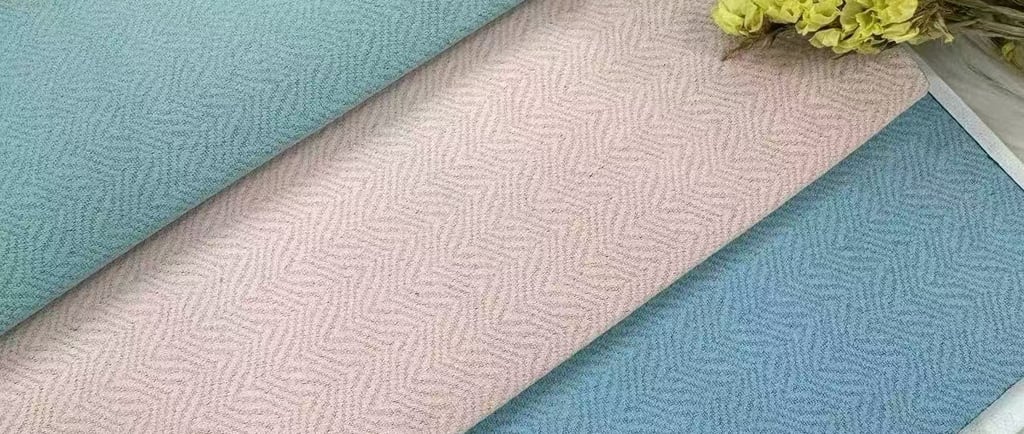Curtain Fabric Selection for Small Spaces: Maximizing Light and Enhancing Design
11/28/20244 min read


Understanding Small Space Challenges
Small spaces pose distinct challenges in interior design, significantly influencing the choices made for window treatments such as curtains. The primary aim in a small area is to maximize natural light while fostering a sense of openness and airiness. This is where careful consideration of curtain fabric comes into play. Selecting the appropriate materials can greatly enhance how the space feels and looks.
One of the foremost pitfalls to avoid in small spaces is the selection of heavy or overly textured fabrics. Such textiles tend to block natural light and visually shrink the area, creating a sense of confinement. Instead, opting for lighter, sheer fabrics can allow sunlight to filter through, thereby expanding the perception of space. Fabrics like linen or light cotton provide a soft, translucent quality that can brighten the room while maintaining privacy. Furthermore, the choice of color is crucial; lighter tones are more likely to reflect light, which contributes to an airy feeling.
The strategic placement of curtains is also vital in maximizing space. Mounting curtain rods higher than the window frame can create an illusion of taller ceilings, while wide-sweeping curtains drawn open can make the window appear larger. Additionally, utilizing fabrics that drape well can soften harsh lines and create a more inviting atmosphere, crucial in small spaces where every design element counts.
Ultimately, the selection of the right curtain fabric can transform a small space from cramped to cozy and inviting. A thoughtful approach not only enhances aesthetic appeal but also significantly impacts the functionality of the area. By understanding these challenges, homeowners can make informed choices that maximize their small spaces while ensuring a harmonious design flow.
Choosing the Right Fabric: Lightness vs. Density
The selection of curtain fabric is a crucial factor in maximizing light and enhancing design in small spaces. The right fabric can significantly influence both the amount of natural light entering a room and the overall ambiance. Lightweight and sheer materials, such as organza or linen, are often favored for their ability to promote light penetration and create an illusion of spaciousness. These fabrics allow natural light to filter through while maintaining a sense of privacy. Consequently, sheer curtains can brighten up small spaces, making them feel larger and more inviting.
In contrast, heavier fabrics like velvet or thick cotton can be used strategically to add warmth and texture to a room. While these denser materials may obstruct some light, they can also provide insulation and noise reduction, making them suitable for areas where comfort is prioritized. When utilizing heavy fabrics, it is essential to consider their placement; layering them with sheer curtains can create a balanced approach. This method allows homeowners to benefit from both lightness and density, enabling them to adjust the ambiance according to their needs throughout the day.
Additionally, fabric blends, such as polyester-cotton mixes, can offer unique advantages. These materials are often more affordable, durable, and resistant to wrinkles, making them practical for everyday use. They can also be designed to mimic the look of heavier fabrics while offering increased light penetration. By experimenting with various fabric combinations and layering techniques, one can effortlessly achieve a look that enhances both the style and functionality of a space.
Ultimately, the decision regarding curtain fabric should take into account both aesthetic preferences and practicality, ensuring that the chosen materials contribute positively to the overall atmosphere of the room.
Color and Pattern: Creating Depth and Dimension
The selection of curtain fabric in small spaces plays a vital role in shaping the room's atmosphere and perception. Color and pattern influence how space is perceived, directly affecting the ambiance and functionality of the area. To enhance light and create the illusion of spaciousness, soft pastels, light neutrals, and airy shades are often recommended. These hues reflect natural light more effectively than darker shades, making the room feel brighter and more open. For example, light blues or gentle greens can evoke a sense of tranquility while expanding the visual expanse.
Patterns, when selected thoughtfully, can introduce depth and dimension without overwhelming a small area. Subtle geometric designs or delicate florals can create visual interest without detracting from the room's overall aesthetic. It is crucial to strike a balance; bold patterns may overpower small spaces, making them feel cramped. Instead, opt for softer motifs that add a layer of complexity to the design while maintaining an airy feel.
In addition to considering color and pattern, analyzing the existing decor is essential. For instance, if the walls are painted in cool shades, curtains in harmonious yet slightly contrasting colors can create a cohesive look. Alternatively, when choosing patterned fabrics, selecting designs that incorporate the same color palette as the furnishings can blend the elements together seamlessly. Utilizing textures can also enhance the effect; sheer fabrics allow light to filter through while preserving privacy, ensuring that the room remains airy and open.
Successful color schemes often incorporate a layered approach, combining different shades of the same hue or complementary colors for an inviting atmosphere. Choosing curtains that harmonize with the overall decor while enhancing light and depth can lead to a well-designed small space that feels both spacious and inviting.
Installation Tips for Small Spaces
When it comes to maximizing light and enhancing design in small spaces through curtain installation, careful consideration of several factors can make a significant impact. Proper rod placement is of utmost importance – ideally, the curtain rod should be installed higher than the window frame. This height creates the illusion of taller ceilings and allows for more natural light to filter into the room, enhancing the overall brightness of the space.
Furthermore, selecting the right curtain length can contribute to the aesthetic appeal. Floor-length curtains can help a small room appear more expansive, but for a modern look, curtains that just graze the floor can also be suitable. Alternatively, if using café-style curtains, choose a length that allows for sufficient light while maintaining privacy. It’s advisable to consider sheer curtains or lighter fabrics as they permit ample sunlight while providing a sense of openness.
The choice of curtain hardware, including the rod and finials, carries an equal importance in achieving a harmonious look. Opt for slim, minimalist hardware that complements the fabric and enhances the elegant simplicity of the curtains. Utilizing decorative brackets can also draw the eye upward, further contributing to the perception of height in a room.
For creating an illusion of more extensive window spaces, consider using multiple curtain panels. This allows you to open the panels wide when the curtains are drawn, thereby revealing more glass and enhancing the feeling of spaciousness. Regular maintenance, including cleaning and properly hanging the curtains, is vital for keeping the fabric fresh and the design looking crisp.
Incorporating these installation tips will not only maximize light in small spaces but will also elevate the overall design, creating a more welcoming and visually appealing atmosphere.
Curtains&Fabrics
Design,production,sales,service in curtain fabrics&curtians.
Quality
Products
sales01@anytextile.com
+8615968501933
© 2024. SHAOXING LEYAO IMPORT AND EXPORT CO.LTD All rights reserved.
